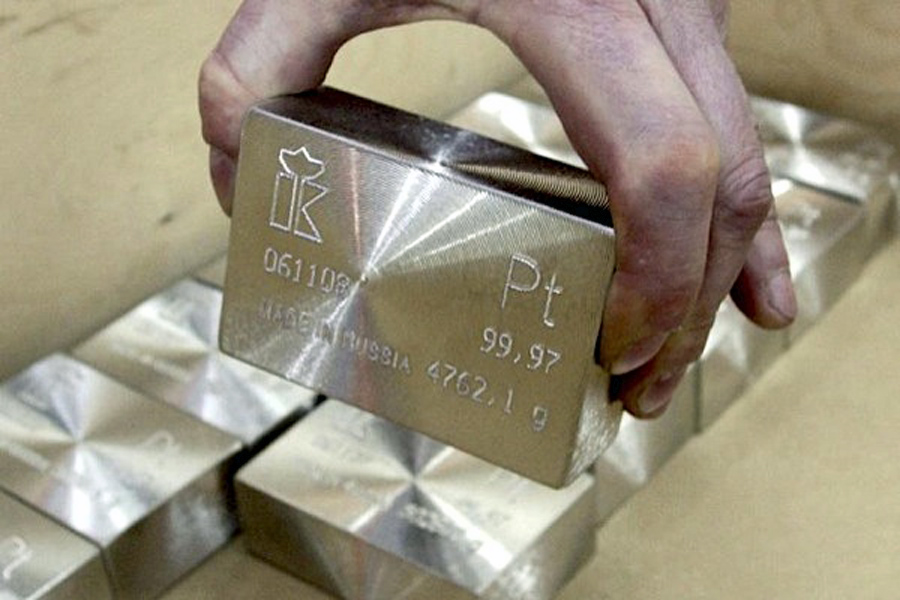
After dropping for a month, due mostly to a weak South African rand, platinum prices appear to be on the way back up after hitting an annual low of $914 an ounce a week ago; 24-hour spot platinum was last bid at $942/oz.
But for those hoping for a strong uptick in the price of the precious metal, the World Platinum Investment Council does not offer reason to be sanguine.
In a report released today, the WPIC says that the deficit in the platinum market will shrink in 2016, due to a softening of jewellery demand.
Looking at 2017, the World Platinum Investment Council predicts a sixth straight year of platinum deficits.
In its report, which incorporates third quarter, full-year and 2017 estimates, the council scaled back the 2016 deficit by 350,000 ounces, to 170,000 ounces.
“The deficit for 2016 has been revised lower this quarter, reflecting a slowdown in retail jewellery sales in China, accentuated at the manufacturer level, due to higher than expected levels of retailer jewellery recycling this year. Chinese jewellery retailers are seeing reduced sales of gold products (due to anti-gifting legislation), which slowed footfall, thereby reducing overall Chinese platinum jewellery sales,” says Paul Wilson, WPIC’s chief executive.
Platinum’s biggest source of demand is jewellery and the metal is also used for curbing emissions in diesel-powered vehicles.
Wilson noted that a year after the VW scandal, automotive demand for platinum remains relatively stable (dropping just 1% in 2017) with rising total vehicle sales set to offset a modest decrease in European diesel share this year. “Diesel cars can, and will, meet demanding real world driving standards on emissions. Consequently, new diesels will continue to play a critical role in helping automakers meet their CO2 emissions obligations,” states Wilson.
The report’s third-quarters numbers showed a fall in both supply and demand for platinum. Total world supply of the metal shrunk 9% from the second quarter, due to lower production from South Africa, the largest platinum producer. “This was driven by safety stoppages and producers replenishing inventories used during outages earlier in the year,” says WPIC.
But demand in Q3 was also down, by 90,000 ounces, due to seasonally lower needs for autocatalysts.
Looking at 2017, the World Platinum Investment Council predicts a sixth straight year of platinum deficits.
Total platinum supply in 2017 is forecast to fall 2% to 7.745 million ounces, with mining supply expected to be flat in 2017 at 6 million ounces. The supply fall however is equalized by a 2% predicted slump in demand, to 7.845 million ounces.
In 2017, projected growth in jewellery demand is unable to offset expected declines in automotive, industrial and investment demand for platinum, states the report.